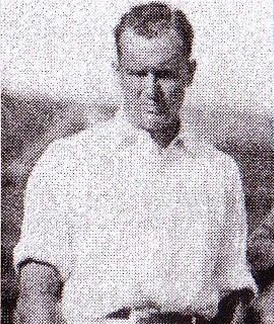
Willard Crocker
Principales réalisations
Membre de l’équipe de la Coupe Davis de 1923 à 1930.
A occupé le 2e rang canadien de 1926 à 1929.
Champion du simple des Internationaux du Canada en 1925 et champion du double en 1923, 1925 et 1929.
Biographie
En 1925, Willard Crocker a été couronné champion du simple masculin des Internationaux du Canada (Coupe Rogers) après avoir vaincu l’Américain W. Scott en quatre manches. En 1929, il a disputé un match mémorable, 4-6, 12-10, 7-5, 4-6 et 9-7 aux mains de l’Américain Frank Shields, qui était l’un des meilleurs joueurs des États-Unis. Il a aussi conquis trois titres de double, soit en 1923, en 1925 et en 1929 avec Jack Wright, son coéquipier de la Coupe Davis et de l’Université McGill. Finaliste des Internationaux du Canada en 1924, il était également le champion provincial du simple et du double en Ontario et au Québec en 1923 et en 1925.
Crocker a étudié la médecine et l’anglais à l’Université McGill. Il faisait partie de l’équipe universitaire et tait le capitaine de l’équipe de tennis en 1920 lorsqu’il a mis la main sur les trophées de simple et de double des Championnats intercollégiaux canadiens. De 1923 à 1930, il a été membre de l’équipe canadienne de la Coupe Davis et a accumulé une fiche globale de 8 victoires et 16 défaites, soit 5 victoires et 11 revers en simple ainsi que 3 gains et 5 défaites en double.
Crocker a pris part aux Championnats américains en 1923 et en 1924, accédant aux huitièmes de finale à sa deuxième participation. Il a également participé à une édition de Wimbledon, atteignant le deuxième tour après avoir indiqué la sortie au Britannique Jack Harrison.
En plus d’avoir été nommé au sein du Temple de la renommée du tennis canadien, Crocker a également été intronisé au Temple de la renommée des sports amateurs canadiens et au Temple de la renommée Redmen de l’Université McGill, en 1999.